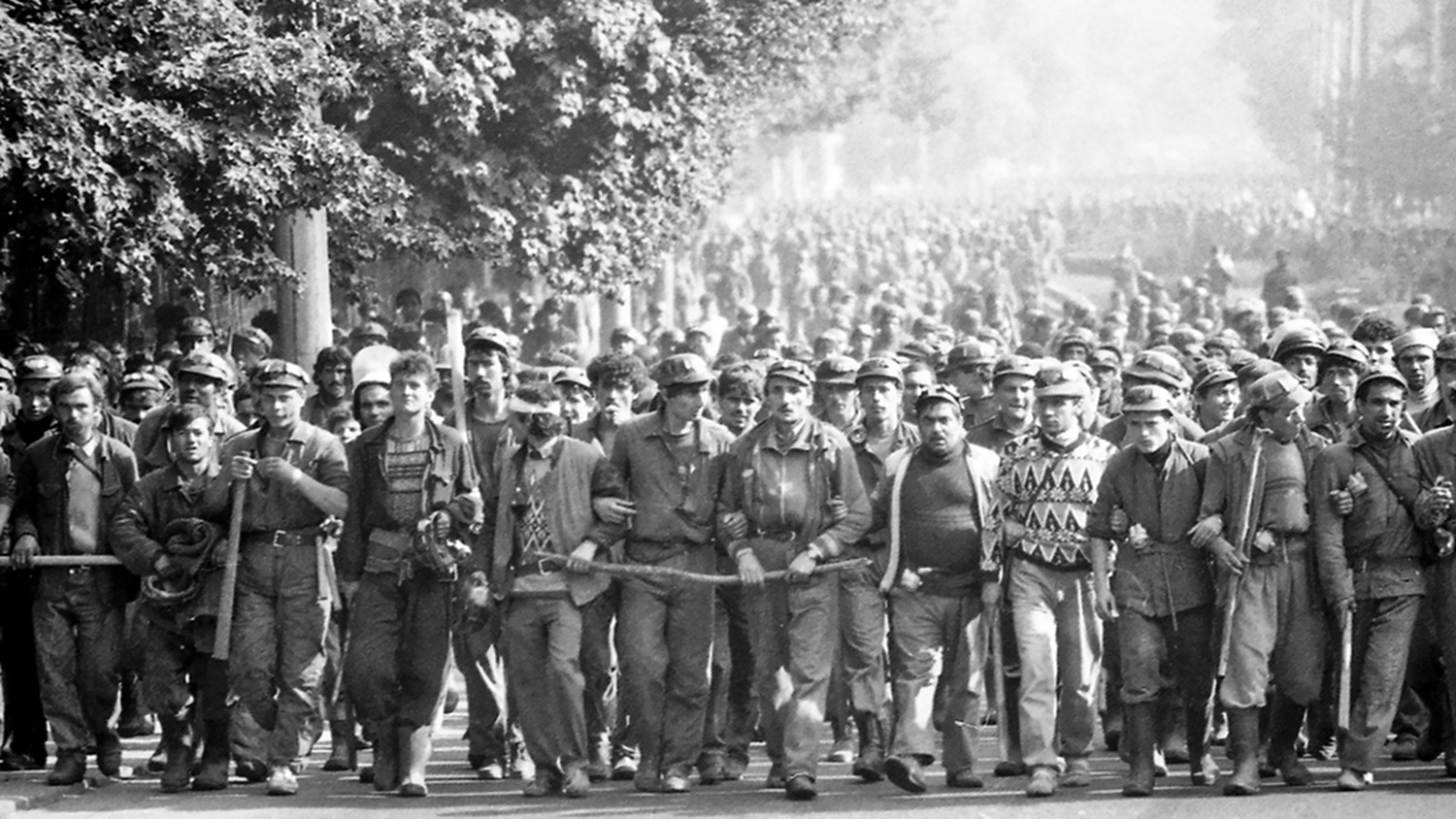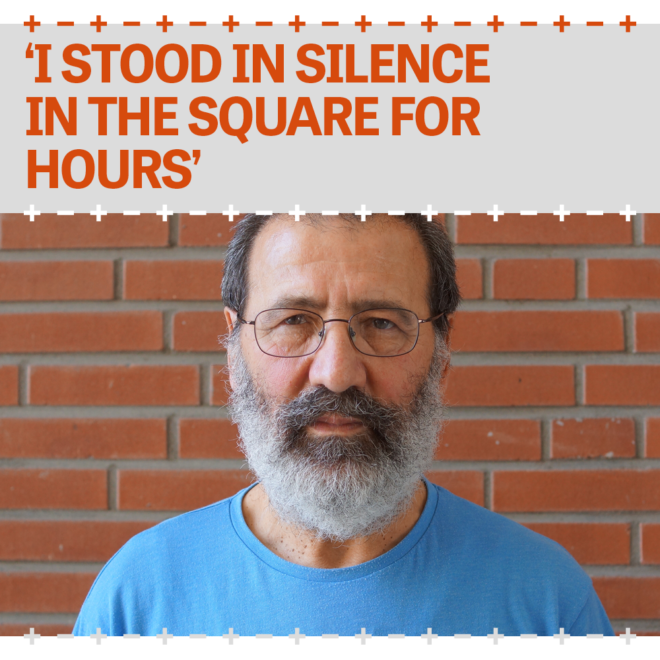Dumitru Tudor (1948), Romania. Bucharest 17-20 June 1990
“I was in the wrong place at the wrong time. On 13 June 1990, I happened to be in Bucharest for work and passed by the University Square. I had been there before: since April, the square had been occupied by thousands of demonstrators who were unhappy with the new regime. That day was more turbulent than other days. I went to have a look, kind of like a tourist. The square had been barricaded by police vans. But then something strange happened: the police retreated, and a few minutes later there were explosions everywhere, as well as smoke, screams and people running.
“I was nearby the television station and saw protestors go in. Helicopters were circling above the building. The crowd was livid; I too raised my fist in the air. When things started to escalate, I left.
“The next day, there was footage of me in the news bulletin on state television. Me, with my fist raised in the air. Apparently, I had been filmed. And then they called me ‘an enemy of democracy’.
“At work, I was told to take a ‘voluntary vacation’. Not much later, they took me to the police station for questioning: my own co-workers had betrayed me. I knew: it’s over now, I am no longer free. I felt cheated and angry, but also afraid and alone. I had no choice; I had to do something.
“It was 17 June, a Sunday afternoon, when I grabbed a big piece of paper at home. In big letters, I wrote ‘Greva Tăcerii’ (‘Strike of Silence’), with thirteen demands under it such as a free press, the release of political prisoners and answers regarding the violent miners. I hung the paper from my neck with a rope and went to the University Square. I stood there in one place, sometimes for hours on end, or walked around a bit. I didn’t say anything. Passers-by gave different responses. Some ignored me, others yelled out: ‘Yes, that’s the way!’
“When President Iliescu was inaugurated, I was still standing in the square. There were thousands of people and lots of international press. I just kept standing there with the piece of paper hanging from my neck. It must have been that day that someone from the Secret Service noticed me.
“A little over a week later, I was arrested. I spent four months in prison. First in a cellar, with criminals, later in a prison where I went on a hunger-strike. They put me in isolation for it, with chains around my ankles.
“After I was released, the Secret Service kept track of me. When after a court case we heard I had to go back to prison, my wife and I fled the country with our three children.
“I definitely don’t have any regrets. Sure, the fact that my protest had so little impact, is a pity. But I would do it again in a heartbeat. It has kept its grip on me to this day, the bitterness, the betrayal.

Mineriadă
At the end of 1989, the Romanian people revolted against Nicolae Ceaușescu during the ‘Romanian Revolution’, after forty years of communist dictatorship. Not much would change: after Ceaușescu’s fall, Ion Iliescu took over. He had been a high-ranking official during Ceaușescu’s rule and was a member of the Communist Party. Many felt that the Communist line was simply being continued, which led to even more protests.
From 25 April 1990, students and other protestors occupied the University Square. When riots broke out in the square on 13 June and protestors broke into the television station, Iliescu ordered a bloody crackdown. Thousands of miners were driven into the city to beat down the protests during one of the so-called Mineriadă.
